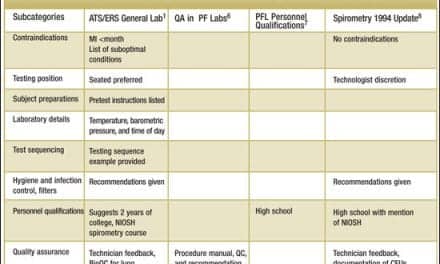Patients afflicted with spinal bulbar muscular atrophy create support networks through KDA, while working to increase awareness of the condition.

Misdiagnosis Is Common
A large number of those misdiagnosed are told they have amyotrophic lateral sclerosis (ALS) or Lou Gehrig’s disease. “We would like to see the neurological community make a standard protocol to run a Kennedy’s blood test before they give an ALS diagnosis,” says Susanne. “It’s a simple thing to do to save someone considerable emotional agony and turmoil.”
Kennedy’s disease is a muscle-wasting disease that affects 1 in 40,000 men worldwide. The disease does not affect women—though some have shown mild symptoms—but they are carriers of the genetic disease, which they can pass on to their children. Unlike ALS, which eventually paralyzes and kills its sufferers within a few years, Kennedy’s disease tends to progress more slowly. Most Kennedy’s patients live normal or near normal life spans. This does not mean that patients and their families have an easy time of it. “It’s a tough disease to pin down because it is so rare,” says Susanne. “Most doctors probably will never see a case. Or they probably have and they just don’t know it.” Because the disease wastes the skeletal muscles, it also affects the bones and joints, causing many patients to rely on canes, and some to become wheelchair-bound. Terry Waite spends about 80% of his time in an electric wheelchair, and is in constant pain. The common cause of death is respiratory failure brought on by pneumonia, other respiratory infections, or the inability to swallow.
Though he could not do all of his normal activities, Terry did not sit back and accept his diagnosis. He went into action and used his skills as a computer programmer to set up a Web site to tell his story. After connecting with a few other Kennedy’s disease patients and finding there were no support groups for SBMA, Terry and Susanne—with assistance from the Families of SMA (FSMA)—formed the Kennedy’s Disease Association (KDA). “It’s to make things happen—to get more funds going to research so we can do something about this disease rather than sit back and hope and wait,” says Susanne. “I found out that there’s not a lot of money going to Kennedy’s; there’s no support—that was the worst thing. We stepped up to the plate and have done a lot in 1 year. Every spare moment of my life goes to this thing; when I’m out of work and on my weekends, I’m working on the KDA.” The KDA was incorporated in August 2000 and received its tax-exempt status in November of that year.
Research
The new organization’s mission is to raise funds for research, create awareness of the disease among researchers and the public, and build support networks of those afflicted with SBMA and their families. The group has already begun amassing dollars toward its research goals. Since August 2000, it has raised $20,000 and may receive another $35,000 gift in stocks. In addition, its first fund-raiser—a member-compiled cookbook—has raised another $8,000. “Once we get that $35,000, we’ll start considering grant requests,” says Susanne, who acts as the KDA’s president and executive director. The KDA’s newest fund-raising effort is the Hope 5 Campaign, which asks every member to send in $5 per month.
However, there are no membership fees to belong to the KDA. “We feel that this information is valuable and should go to whoever needs it,” says Susanne. “And we believe that through all the services and support we provide, those who are getting will give back. They may not give back today, but they may give back over time and as we build more and more credibility. I see us growing grass roots and small. We ask people to do fund-raisers—have a dinner at your home, collect cans and send us the money, my mom’s having a garage sale where she got donations from friends. Over time I see us being able to extend our fund-raising efforts, but I think because [Kennedy’s disease] is so rare and because it’s not something you might get tomorrow, it’s hard to ask for money from individuals if this doesn’t affect them in any way. We’re building on the friends and family base.”
Getting Out the Word
The organization is also getting the word out to the medical community. It is in the process of sending a mailing about Kennedy’s disease to 12,000 neurologists.
The small staff of the KDA is made up of SBMA patients and people—usually daughters and wives—whose lives have been touched by the disease. The organization’s database numbers 350 people and Susanne never misses an opportunity to meet with patients or their families when she travels on business. Terry is on full-time disability and does what he can for the KDA, though this is limited, since the disease has sapped his once abundant vitality.
As important as it is to Susanne and Terry to raise money for research, it is equally as important to get the word out, something that could not have happened as quickly without today’s communication tools. “We would never have been able to find other Kennedy’s people without the Web,” says Susanne. “It’s not really about getting money from people, it’s more about getting the word out, because of people sitting around who are misdiagnosed. We want them to maybe recognize their symptoms and say ‘that might be me.’” The KDA’s Web site has made it an international organization, inspiring Kennedy’s patients in Germany, Holland, and Canada to set up their own sites. As one of its features, the Web site hosts chats and other exchanges between patients, families, and researchers.
It was through the Web that Alison Pasiuk and her husband, Frank, discovered the KDA. “At first it was wonderful to find that site because we had never heard of [Kennedy’s disease], and to read all the personal stories and see there were other people that had this and it really wasn’t ALS,” says Pasiuk. “Just the information that it provided was valuable, because there was no information anywhere. Even the doctors couldn’t give us any.” Like many other KDA members, Pasiuk has posted her and her husband’s story on the Web site.
It is a story that fits the classic outlines of Kennedy’s disease. After experiencing trouble playing hockey, Frank Pasiuk went to his doctor who, not surprisingly, diagnosed him with ALS. “It was a death sentence,” says Alison. For the next 7 years, Frank was treated for ALS.
Frank was finally diagnosed with Kennedy’s disease at Boston’s St Elizabeth Hospital after being included in a research study there. Though Kennedy’s is a serious disease, both Frank and Alison were relieved. “After believing for so long that he had ALS, once we found out that it wasn’t that, I can’t even tell you the relief,” says Alison. “It wasn’t a death sentence anymore.”
Unlike Terry Waite, whose symptoms have increased rapidly, Frank has a more classic case of Kennedy’s. His symptoms have progressed at a slower rate. He regularly visits a chiropractor and stays in shape by going to the gym. “He goes to the gym every day of the week,” says Alison. “He’s not lifting a lot of weights, but he has not stopped. He could, say, lift 100 pounds with his legs before, and now he can probably lift 30, but he’s still doing it. He figures he should use the muscle he has.” Unlike Terry Waite, Frank currently experiences no pain.
No Cure
Because there is no cure, medical professionals and patients are left with only one option—to treat the symptoms, which include muscular atrophy, cramps, dysphagia, and impotence. Treating the symptoms can be a hit or miss prospect. “The only treatments that are going on is this guy’s doctor gave him something for cramping and that guy’s doctor gave him something to help relax his muscles,” says Susanne. “There’s no one formal this-is-what-you-should-do-with-a-Kennedy’s-patient. And there is no way to get better at this point. It’s just a progressive neuromuscular disease and it just continues to get worse.”
Although there have not been any major clinical trials, researchers have been working on discovering a cure for Kennedy’s disease. “In the laboratory the disease has been reproduced in cell culture systems and in animals—transgenic mice and flies—so the disease has been reproduced in several systems in the laboratory where you can see what drugs might work and what the mechanism is,” says Kenneth Fischbeck, MD, chief of the neurogenetics branch of the National Institute of Neurological Disorders and Stroke. “The cause is a mutation in the androgen receptor gene—the gene that encodes the protein that binds the male sex hormones. This particular kind of mutation is an expansion of a repeat in the gene. It varies from patient to patient how great the expansion is. There is a correlation between the disease severity and the length of the expansion. So it’s like part of the gene is stretched out. It’s an interesting finding because it puts Kennedy’s disease together with other diseases that have the same kind of mutation, probably the most famous of which is Huntington’s disease, so it’s the same kind of mechanism, mutation; they’re both diseases where there’s degeneration of nerve cells in the brain. In Kennedy’s disease, it is the motor nerve cells; in Huntington’s disease, it is nerve cells higher up in the brain.”
Though Kennedy’s disease—which was first described in the United States in the 1960s—has similarities to eight other diseases, there are striking differences between it and ALS. “The symptoms overlap with ALS, so not infrequently patients are misdiagnosed as having ALS,” says Fischbeck. “It differs from ALS in that the weakness is lower motor neuron. In ALS you get degeneration of higher level neurons in the brain that results in stiffness or spasticity in the Brissaud’s reflexes; that does not occur in Kennedy’s disease. And also the weakness in Kennedy’s disease is symmetrical; ALS usually is asymmetrical. Probably most important, the weakness is more slowly progressive. In ALS the patients usually die within 3 to 5 years from progressive paralysis. Kennedy’s disease goes over 10, 20, 30 years.”
Becoming Less Obscure
Fischbeck says that Kennedy’s disease is becoming less obscure to researchers and physicians. “We found the gene 10 years ago,” he says. “Kennedy’s, I think, is becoming increasingly appreciated as a disease. It was not widely appreciated until the 1990s, after the gene was discovered in 1991; then there was a test available—a genetic test—to see who has it. A lot more people have been diagnosed over the last few years.”
Even though the KDA is new and has few resources, Susanne Waite has not let that stand in her way—success, for her, is not a measure of material gains. “Not a lot of money was coming in at the beginning,” she says, “and we said, if nothing else—if we don’t raise money for research and we can’t educate neurologists through this association—we’ve helped other individuals with Kennedy’s disease find each other and talk to each other. There were three individuals in the same city and they didn’t even know it. Now they get together and talk.”
Chris Wolski is associate editor of RT Magazine.









